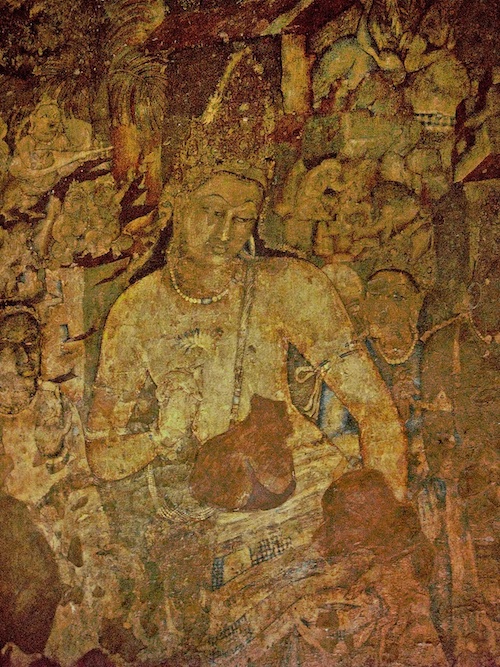Art, India: Government patronage
This is a collection of articles archived for the excellence of their content. |
Exhibitions
Exhibition of Indian Art, 1948
Vandana Kalra, Aug 16, 2024: The Indian Express

From: Vandana Kalra, Aug 16, 2024: The Indian Express

From: Vandana Kalra, Aug 16, 2024: The Indian Express
From the Indus Valley ‘Dancing Girl’ to Pahari paintings, the 1948 exhibition showcased major textiles, paintings and sculptures of India.
In 1947, when Indian artists were still developing a distinct modernist idiom for the newly independent nation, the Indian government decided to celebrate Indian art and its heritage through an exhibition.
Titled “Exhibition of Indian Art”, the show spanned centuries — from the Indus Valley Civilisation more than 4,500 years ago to bronzes of the late medieval period and Mughal and Rajasthani miniatures. It was held in the grand halls of the Government House, now called the Rashtrapati Bhavan, between November 6 and December 31, 1948.
The exhibition attracted stalwarts of Indian art, including FN Souza and MF Husain. In K Bikram Singh’s 2008 book on Husain, the artist was quoted: “The exhibition left me both humbled and exhilarated. It was like scaling a mountain and then discovering a whole new range of mountains. Looking at the forms of the Gupta sculptures, experiencing the innocence of Indian folk art and seeing the rawness of colours in Basholi and Pahadi paintings, I knew I had stumbled upon something priceless”.
The conceptualisation
Organised by the Royal Academy of Arts in London with help from the Government of India, the exhibition was first held at Burlington House in London between November 29, 1947, and February 29, 1948. Marking the transfer of power in India, it featured works from museums and private collections.
“For over 2,000 years India has witnessed intense creative activity in the field of sculpture, painting, textile, metal-casting and other minor arts. This rich heritage is being gradually rediscovered both in the West and in India itself. As a means to that end the Royal Academy of Arts took up the idea of holding an Indian Exhibition for the purpose of displaying to the public in the West typical masterpieces of the art of India,” noted the preface of the catalogue published for the exhibition in India.
It added how there was substantial nationwide interest when the material arrived back from England in June-August 1948, and the Ministry of Education decided to hold an exhibition in India before the collection was dispersed. An attempt “towards stock-taking of the art heritage of India”, it was also to vitalise the country’s future cultural programme.
The different sections and highlights
The exhibition broadly had three main interests: sculptures, paintings and textiles.
SCULPTURES: The earliest exhibits belonged to the third century BC, like artefacts from the Mohenjo-daro and Harappan civilisation. This included the famous bronze “Dancing Girl” statue from Mohenjo-daro and Indus Valley seals.
A mammoth stone bull, which once surmounted a tall Asokan pillar at Rampurva in Bihar, represented the Mauryan period. It remains at the Rashtrapati Bhavan today. From the Gupta age (fourth-fifth century AD), Buddha figures from Sarnath and Bodhgaya were placed. Sculptures in varied mediums, from terracotta to bronze, were presented.
PAINTINGS: The Ajanta paintings were represented in the exhibition with a copy in original size and colour of the Avalokiteshvara Padmapani, the compassionate Buddha of blue lotus.
The 16th-17th century Rajputana paintings on display included the famous Ragamala miniature paintings. Pahari school and Deccan paintings were also showcased. From the Mughal era, there were paintings from Hamzanama, a book of romantic tales that Akbar had a fondness for.
TEXTILES: With their 2,000 year-old history, Indian textiles occupied a place of pride in the exhibition. A specimen of Dacca muslin, measuring 10 yards and weighing eight tolas, was received from Calcutta for it.
Patola designs from Gujarat, gold kimkhab brocades from across India, tie-and-dye fabrics from Sanganer and Gujarat, chain-stitch embroideries from Kathiawar, Chikan work from Lucknow, phulkari chaddars from Punjab, and embroidered shawls from Kashmir were also included.
Floor plan for the exhibition
According to the exhibition catalogue, it was C Rajagopalachari, the then Governor-General of India, who offered the State Rooms in the Government House for the exhibition.
While the Open Court displayed heavy sculptures of the early and late periods, the vestibule had objects from the Indus Valley, Maurya and Sunga sculptures, and Mughal carpets. The iconic Durbar Hall had, among others, Kushana and Gupta sculptures of Mathura School, sculptures from Amaravati Stupa, and finds from Taxila.
While the ‘long drawing room’ showcased Pala and Western Indian paintings and textiles, the ‘north drawing room’ had arms and armour, Deccan paintings, manuscripts and textiles. Other spaces in the Rashtrapati Bhavan also held the exhibits.